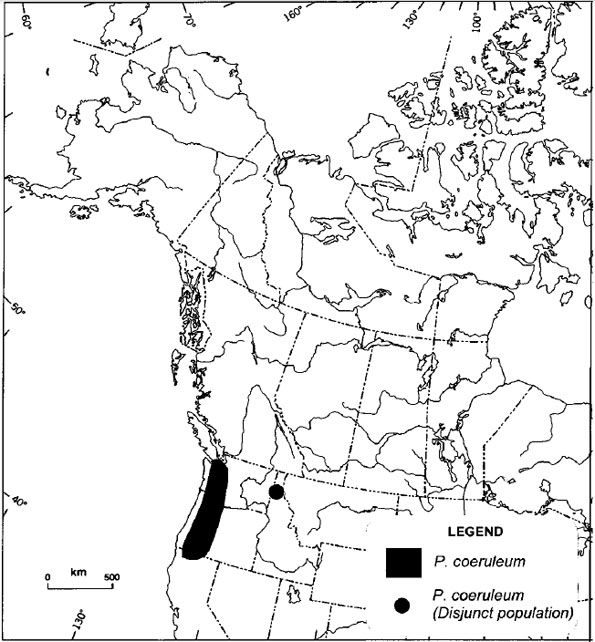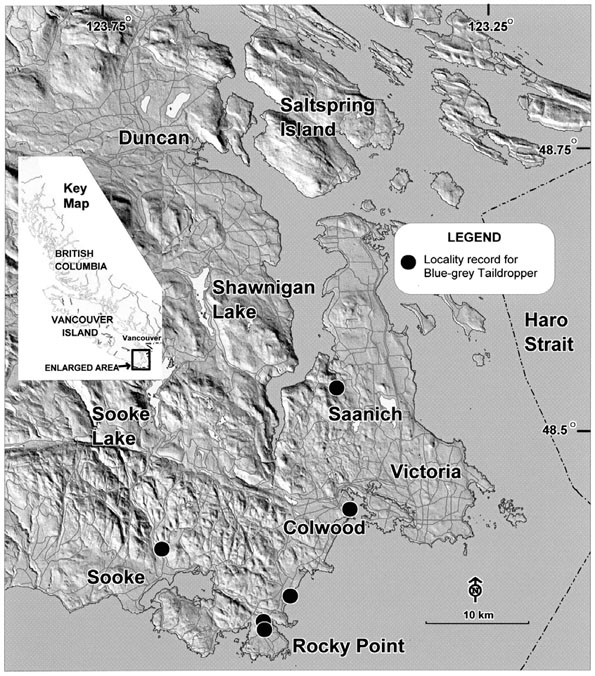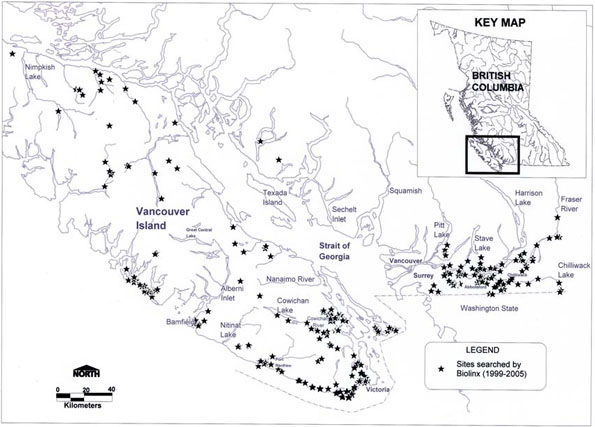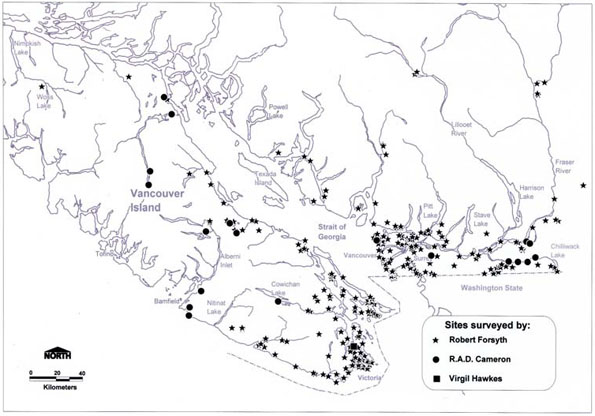Blue-grey taildropper slug (Prophysaon coeruleum) COSEWIC assessment and status report: chapter 6
Distribution
The geographic distribution of P. coeruleum extends from southern Vancouver Island, British Columbia, south to the Puget Lowlands in Washington State and through the Cascade Range into Oregon and northern California (Figure 2). A disjunct population exists in northern Idaho (Ovaska et al. 2004). Populations in southern Oregon and northern California may represent separate species (see Genetic Description). The distribution of the species throughout the northern portion of its range appears to be highly fragmented and consists of geographically isolated populations. For example, there are only a few recent locality records from western Washington, although extensive surveys have been conducted in this area (Ovaska et al. 2004). The reasons for the fragmentation are unclear and may reflect a combination of past climatic changes and habitat modification through human activities.
Figure 2: North American Distribution of Prophysaon coeruleum

Based on Wilke and Duncan (2004) and Ovaska et al. (2004).
The extent of the species’ range in the United States has been estimated to be about 1000 – 5000 km2 (Cordeiro 2002a, b, c). Populations in British Columbia and Idaho have since been documented, and the larger value might be a more accurate estimate of the global range.
In Canada, the species is known from only a small number of localities on southern Vancouver Island, British Columbia (Figure 3). Currently, there are six locality records from five sites, all from the Capital Regional District: Sooke, District of Metchosin (two nearby localities on Rocky Point Peninsula and an additional site), Colwood, and Saanich (Figure 3). The two farthest localities (Rocky Point and Saanich) are about 25 km apart.

Figure 4: Localities Searched for Terrestrial Gastropods on Vancouver Island and the Coastal Mainland of British Columbiaby Biolinx Environmental Research Ltd. (1999-2005)

Figure 5: Localities Searched for Terrestrial Gastropods on Vancouver Island and the Coastal Mainland of British Columbia

By Cameron (1984), Forsyth (1990-2003) and Hawkes (2004).
Three of the known sites (Rocky Point, Colwood, and Saanich) are on federal lands managed by the Department of National Defence. The remaining two sites are within Capital Regional District Parks (see Habitat Protection and Ownership)
This species was documented from Canada only recently with the first record from Rocky Point Peninsula in 2002 (Ovaska and Sopuck 2002, Ovaska et al. 2004). In 2003 and 2004, the species was found at four additional localities (Ovaska and Sopuck 2004a, b; Hawkes 2004). Surveys by Ovaska and Sopuck (2004a,b and field verification associated with this status report) specifically targeted this species. The lack of previous records probably reflects a combination of factors: relatively low search effort during the optimal seasonal period, low detectability (seasonal activity peaking in late autumn; secretive habits), and population and distribution characteristics of the species (apparent rarity; patchy distribution; low densities). However, sufficient search effort is available to indicate that the species is relatively rare and has a small geographic range when compared to most other forest slugs in southwestern British Columbia (see Search Effort).
The extent of the species’ range in British Columbia is poorly known. As of December 2004, the known extent of occurrence was about 150 km2, representing about 3% of the estimated global range of the species. The known area of occupancy is unknown but represents a small fraction of this value, which includes highly modified and developed areas on southern Vancouver Island.